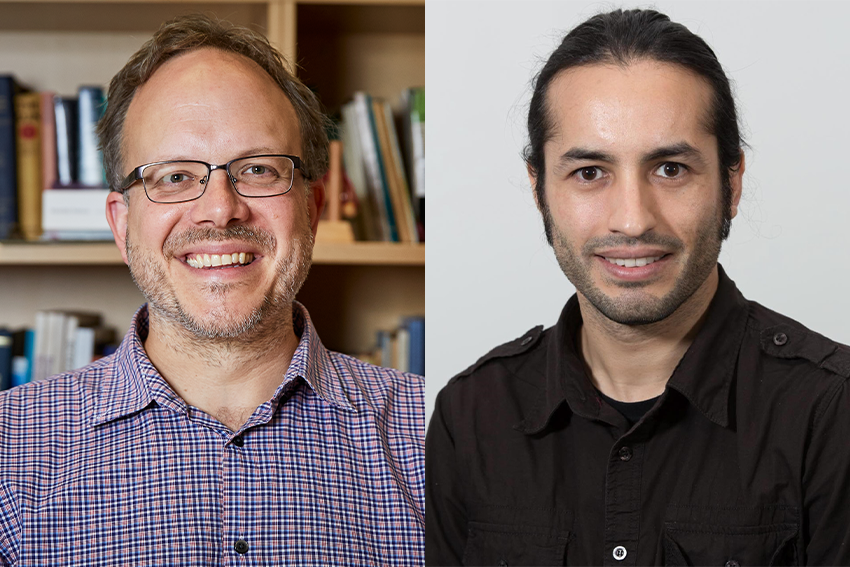Gravitational waves Marsden success

Associate Professor Willem van Straten and Lecturer Patricio Maturana Russel from DCT’s School of Engineering, Mathematical and Computer Sciences join a multi-institutional team that will make core contributions to gravitational wave astronomy and facilitate participation of Aotearoa New Zealand scientists in the international LISA mission.
The three-year Marsden Fund Council Award project has secured $3 million and will be led by Professor Renate Meyer from the University of Auckland. Van Straten and Maturana Russel join scientists from the universities of Auckland, Otago, Canterbury and Göttingen, Victoria University of Wellington, Observatoire de la Côte d'Azur, and King’s College London.
Gravitational waves – ripples in space-time caused by accelerating massive objects – were predicted by Einstein’s theory of general relativity in 1916, but they weren’t directly measured until 2015.
This ground-breaking discovery has marked the beginning of a revolution in astronomy. Whereas light waves have provided a picture of the Universe back to 400,000 years after the Big Bang, gravitational waves can potentially give us information all the way back to a fraction of a second after the Big Bang.
A new ‘Laser Interferometer Space Antenna’ (LISA) mission is being developed by the European Space Agency with the goal of launching in 2034. LISA will measure low frequency gravitational waves, offering ringside seats to mergers of black holes and neutron stars, which are among the most enigmatic objects in the Universe. LISA will open us a new window to look at the universe. To clearly decipher these weak gravitational wave signals, it is essential to carefully characterise the instrumental noise using statistical methods.
Professor Meyer will lead a large interdisciplinary team bringing together expertise in mathematics, computational science, fundamental physics and novel statistical methodologies to make core contributions to gravitational wave astronomy and facilitate participation in the LISA mission.
Associate Professor van Straten says the opportunity to be involved in a curiosity driven project with such a broad range of institutions is a wonderful collaborative opportunity. “Being part of this team lead by Professor Meyer is an exciting opportunity to collaborate. Renate is renowned for her use of Bayesian statistics and there is significant overlap between her methods and the pulsar timing array research I do. I’m excited to work together and maybe learn some new tricks too.
“This research into the development of our universe following the Big Bang is almost purely curiosity driven. It’s about understanding how our universe developed, rather than an immediate commercial application, and that is part of why we’re able to gather a group of academics across a range of disciplines from so many institutions to work together. Who knows, what we discover in this project may be used by future civilisations to help them become space faring,” says van Straten.
“This project is interdisciplinary, bringing together astronomers, statisticians and physicists,” says Lecturer Patricio Maturana Russel. “It will allow us to read the history of the universe and find answers to some of its great mysteries.”
The team will look at both the statistical challenges faced when attempting to extract the gravitational wave signals from the raw data, and the properties of key sources of gravitational waves. The team’s goal is to build momentum for a decades-long collaboration with international teams in one of the world’s most exciting scientific endeavours.
By doing so they will help realise the potential of gravitational wave observatories to advance stellar astronomy, galactic astrophysics, and fundamental particle physics.
The project is due to begin in early 2022.